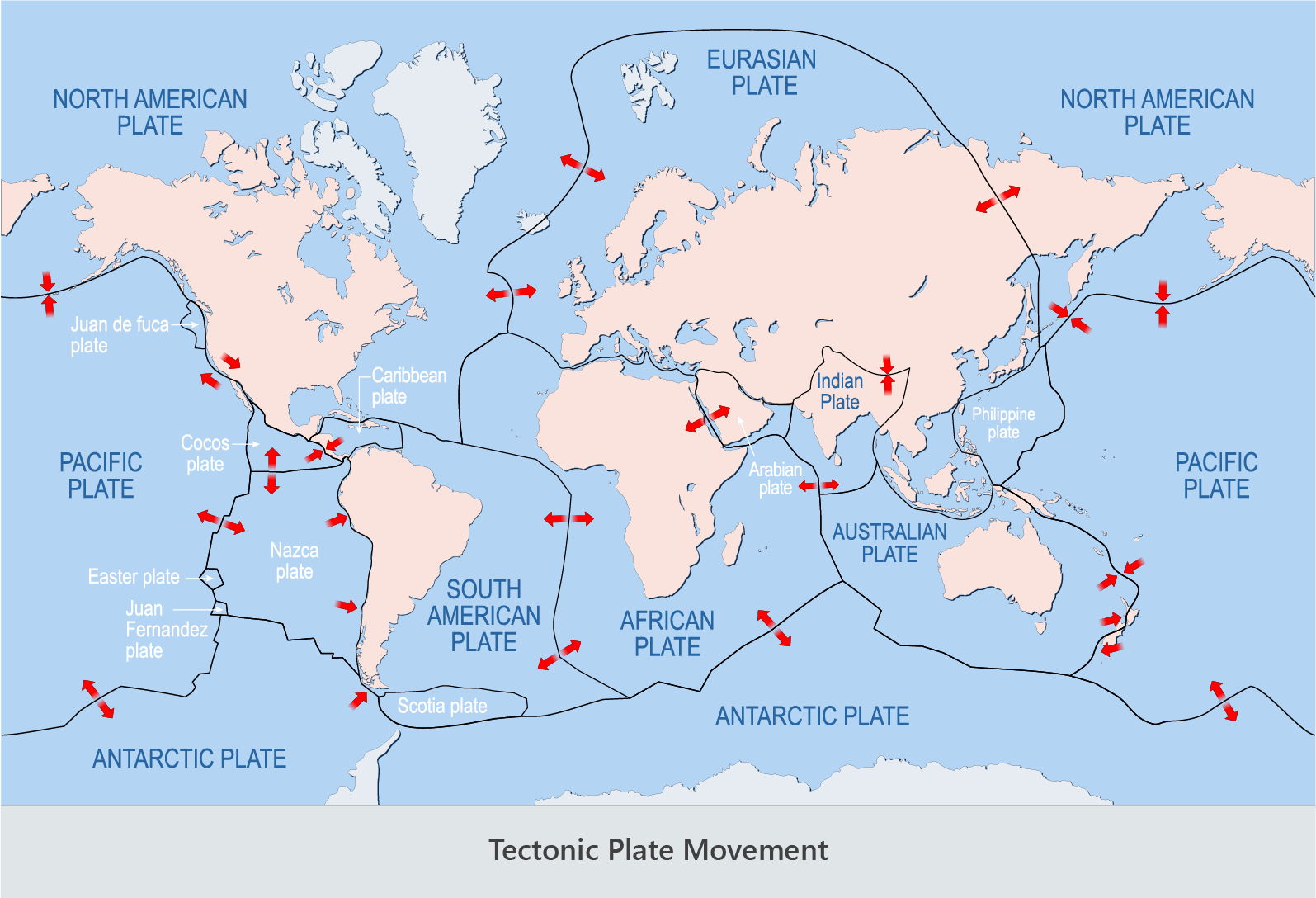This is a lesson summary. The full lesson can be viewed by purchasing an online course subscription.
Learning Objective
In this lesson we will learn about the different types of boundaries between tectonic plates and the geological features that are associated with them.
Learning Outcomes
By the end of this lesson you will be able to:
- Describe divergent, convergent and transform plate boundaries, with examples.
- Differentiate between continental-oceanic, continental-continental and oceanic-oceanic convergent boundaries, with examples.
- Describe the main geological features associated with the different types of plate boundaries.
- Explain why the types of geological features associated with different plate boundaries depends on the direction of movement and the type of crust involved.
- Describe subduction and the formation of volcanic arcs.

(Image: VectorMine, Adobe Stock)
Lesson Summary
- There are three main types of tectonic plate boundaries based on the relative movement of the two plates involved. These are:
- Divergent plate boundaries – boundaries where two tectonic plates are moving apart.
- These are referred to as constructive plate boundaries as they are sites where new crust is formed.
- Convergent plate boundaries – boundaries where two tectonic plates are colliding.
- These are referred to as destructive plate boundaries as they are usually sites where crust is destroyed.
- Transform plate boundaries (also known as transform faults) – boundaries where two tectonic plates are sliding past each other.
- These are referred to as conservative plate boundaries as they are sites where crust is neither formed nor destroyed.
- There are three types of convergent plate boundaries depending on the types of crust involved. These are:
- Continental-oceanic convergent boundaries – convergent boundaries involving continental and oceanic plates.
- The oceanic plate is subducted beneath the continental plate as the oceanic plate is more dense and sits lower on the asthenosphere.
- Continental-continental convergent boundaries – convergent boundaries involving two continental plates.
- Both continental plates are pushed upwards as they are too buoyant to undergo subduction.
- Oceanic-oceanic convergent boundaries – convergent boundaries involving two oceanic plates.
- The older oceanic plate is subducted beneath the younger oceanic plate as the older plate is more dense and sits lower on the asthenosphere.
- Subduction is the process by which one tectonic plate is pushed beneath another.
- The plate that is subducted melts and the resulting magma rises towards Earth’s surface.
- At continental-oceanic convergent boundaries, the rising magma results in the formation of continental volcanic arcs.
- At oceanic-oceanic convergent boundaries, the rising magma results in the formation of island volcanic arcs.
- Divergent plate boundaries are associated with:
- Rift valleys
- Volcanism
- Earthquakes
- Metamorphism
- Continental-oceanic convergent plate boundaries are associated with:
- Subduction
- Mountain ranges
- Ocean trenches
- Continental volcanic arcs
- Earthquakes
- Tsunamis
- Metamorphism
- Continental-continental convergent plate boundaries are associated with:
- Mountain ranges
- Earthquakes
- Metamorphism
- Oceanic-oceanic convergent plate boundaries are associated with:
- Subduction
- Ocean trenches
- Island volcanic arcs
- Earthquakes
- Tsunamis
- Metamorphism
- Transform plate boundaries are associated with:
- Mountain ranges
- Pull-apart basins
- Fault lines
- Earthquakes
- Tsunamis
- Metamorphism

The type of tectonic plate boundary is determined by the relative movement of the two plates involved.
(Image: designua, Adobe Stock)
(Header image: Roop Dey, Adobe Stock)
